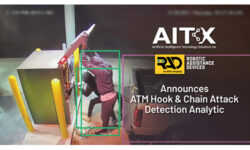Access Control Gets Internet Injection
In this rapidly growing world of Internet protocol (IP)-based technology, the information superhighway continues to provide security professionals new means to expand their services and offerings. This is especially true where it involves monitoring and interacting with remotely managed access control systems.
The need for access control at remote locations has long been an end-user desire. For decades, the only way to provide signal transport was expensive leased telecom lines. Now, making use of broadband and the Internet, several leading security equipment manufacturers have turned to the Internet as a means of transporting command, control and even video for remote access control applications.
“With the proper broadband connections off the premises, the Internet can provide enough bandwidth to allow connection to remote devices to operate as they would on the local network,” says Tom Heiser, vice president of Networked Access Solutions, a HID Global company.
Many of today’s remote managed access control systems employ enhanced, integrated platforms that work well in a network environment, including the Internet. Following is an exploration of some of the current applications where Internet-based remote access control is being used. This will also include a look at the technology and how it’s being applied.
Diversity in Design Offers Assorted Remote Managed Access Options
The term remote access control has more than one meaning within the security industry.
“Remote access control can be simplistically defined as the ability to manage and monitor access control activity from a location other than where the access control is taking place,” says Heiser. “This could take the form of anything from a controller using the Internet to communicate to a host server, to using a VPN [Virtual Private Network] to login to a network to gain access to the access control host server [in lieu of a thick client], to using the Internet to login to a controller with an embedded Web server to unlock a door.”
However, some define such capabilities and function in a different context.
“I don’t use that term. I think what you mean by remote access control is what I call networked access control,” says John Moss, CEO and co-founder of S2 Security of Wellesley, Mass. “The difference being that networked systems should be immune to geographic distance, regardless of where you are. For sure there are bandwidth considerations, but only in the raw data [like video], not in the control-related communications.”
The most popular capability of remote access control includes the use of live operators who interact with visitors and authorized users at a remote location in near real-time.
As Moss points out, remote access technology using the Internet allows security personnel to observe activity using video cameras. And where video imaging is required, security personnel are able to verify identify by comparing stored user images with incoming video images.
Remote access control also allows security to manage cardholders and data, and develop reports that can usually be processed around the clock.
Remote Access Offers a New RMR Opportunity to Security Dealers
Remote access control offers a unique opportunity for enterprising security dealers looking for ways to expand recurring monthly revenue (RMR).
“The biggest benefit that remote access control provides is that it now allows for access control management to be provided as a centralized service, rather than managed in-house,” says Heiser.
A building owner has a choice to make, says Gene Samburg, CEO of Arlington, Va.-based Kastle Systems, a building and office security system provider. The owner can choose to develop an in-house infrastructure — a potentially expensive proposition — or “get it done cheaper and better by going to a professional who earns his living managing remote facilities,” Samburg says.
No matter which flavor of remote managed access control a security dealer uses, the opportunity for RMR should be seriously considered. Many access control manufacturers are building features and functions into their products that offer this potential. For example, where a corporation’s own security department is responsible for the day-to-day management of an access control system, an enterprising security firm can realize RMR through maintenance and service agreements.
Wide Acceptance of TCP/IP Has Made Use of the Internet Possible
With the advent of the TCP/IP Internet reference model, also called Internet protocol suite, an entirely new world has opened up to both end users and security firms. TCP/IP, or transmission control protocol/Internet protocol, was developed in the 1970s by the Defense Advanced Research Projects Agency (DARPA), a largely discrete entity under the Department of Defense (DoD) umbrella.
The purpose of TCP/IP is to provide a uniform standard of communication where end users can view material and interact with one another on the Internet. Subsequently, through the years the use of TCP/IP also was adopted by a large percentage of access control manufacturers for general use in their systems, whether on- or offline.
For example, a large percentage of access control manufacturers, especially the larger players in the market, use TCP/IP for displaying information and graphical elements. The same browser enables the operator to communicate with the head-end at the remote location over the same Internet connection.
Two-way audio makes it possible for security personnel to converse in near real-time, often using an IP-based intercom (see sidebar below). All of this is made possible using an IP-based remote managed access control platform.
If you enjoyed this article and want to receive more valuable industry content like this, click here to sign up for our FREE digital newsletters!

Security Is Our Business, Too
For professionals who recommend, buy and install all types of electronic security equipment, a free subscription to Commercial Integrator + Security Sales & Integration is like having a consultant on call. You’ll find an ideal balance of technology and business coverage, with installation tips and techniques for products and updates on how to add to your bottom line.
A FREE subscription to the top resource for security and integration industry will prove to be invaluable.







